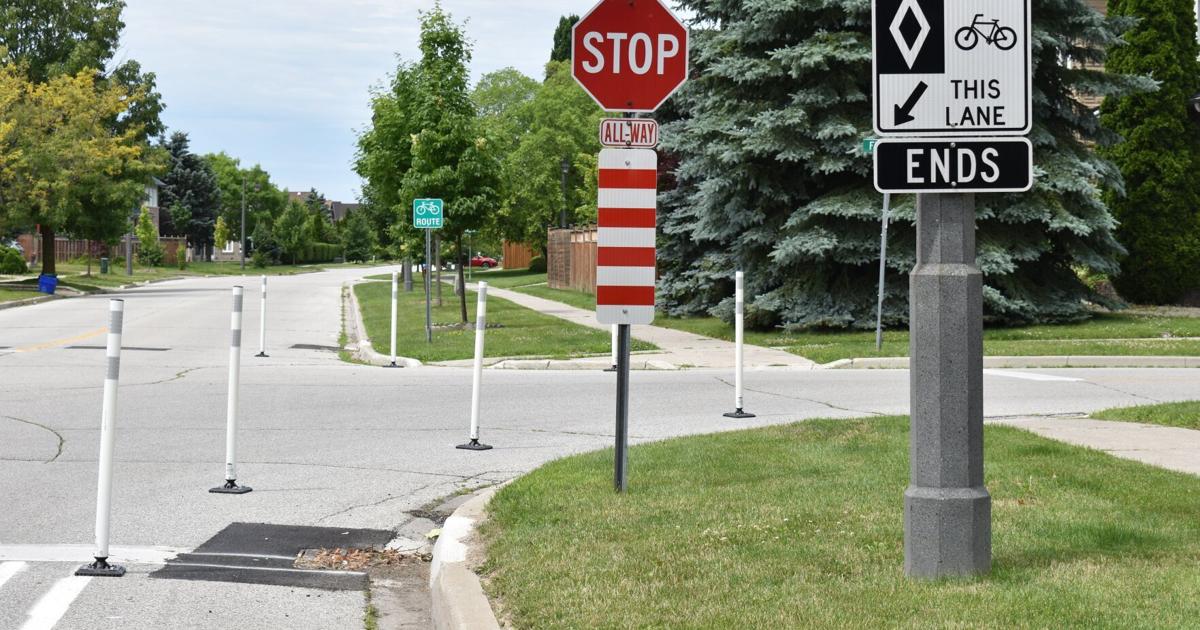“They are not safe. They are anything but for safety,” said a woman who added vehicles in the two-block section sometimes drive in the middle of Springbrook to avoid the bollards.
Oh, so drivers behind of the wheel of an automobile are the danger. Why remove the bike lanes rather than the car lanes?
I heard that Etobicoke’s NIMBYs are insane, but this is a new level of stupidity from Richmond Hill.



Why did anyone think bollards are a good way of adding biking infrastructure? I don’t like them when I ride by bike or drive my car. Who likes them??
Keep in mind that we’re talking Richmond Hill in Ontario… an area where cycling infrastructure isn’t easy to get.
In this case, say you’ve got the following options, let me know what you’d choose:
a) No cycling infrastructure at all. No sharrows. No bike route sign. No bollards. No painted gutters. Cars will park where they like, turn into the way of cyclists causing “right hook” accidents on a regular basis.
b) A “bike lane” that gets filled with parked cars, forcing cyclists into the car lane (causing an increase in crashes and cycling injuries/fatalities). There’s a bike route sign, but intersections are a free-for-all with frequent right-hook crashes.
c) A mess of painted bike gutters, signs, and sharrows. But turns are protected by plastic bollards, so drivers don’t use the bike lane as a turning lane.
Unfortunately, you won’t have the option for separated, dedicated bike lanes or multiuse paths (especially not on this small, residential street). Not only due to the lack of space, but because NIMBYs will not allow it.
There is no “best” solution when given crappy options. But if I had the option to put inexpensive, plastic bollards on right turns so that drivers fear getting their car scratched up (with a side-effect that they aren’t running over cyclists during right turns), then I’d go with that until a better solution comes up.
Also, you guys are aware that bollards (both plastic, but also metal and concrete) are used in some pretty major bike and pedestrian-friendly cities. Amsterdam has them protecting nearly every corner. San Francisco has them on both sides of their bike lanes, so cars can’t enter them. Even in the bike-hating UK, you’ll see them protecting right turns for cyclists:
So are they all that’s needed for cycling infrastructure? No, of course not. But having them is better than not. At the very least, they keep people from parking in bike lanes at intersections.